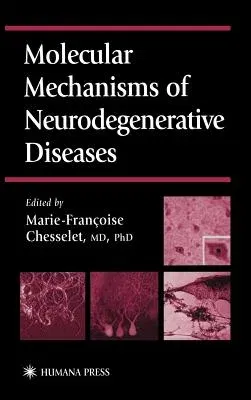The field ofneurodegenerative diseases is undergoing an unprecedented
revolution. The past decade has seen the identification of new mutation
mecha- nisms, such as triplet repeat expansions, and new genes causing
familial forms of common neurodegenerative diseases, such as Parkinson's
and Alzheimer's diseases. Cellular and animal models based on this
genetic information are now available and, importantly, common
mechanisms are rapidly emerging among diseases that were once considered
unrelated. The field is poised for the development of new therapies
based on high throughput screenings and a bet- ter understanding of the
molecular and cellular mechanisms leading to neurodegeneration.
Molecular Mechanisms of Neurodegenerative Diseases reviews recent
progress in this exploding field. By nature, such a book cannot be all
inclu- sive. It focuses on Alzheimer's, Parkinson's, and CAG triplet
repeat diseases. In the first chapter, Bill Klein reviews the role of A
toxicity in the patho- physiology of Alzheimer's disease. This
controversial issue is further exam- ined in the context of transgenic
models of Alzheimer's disease by LaFerla and colleagues. Sue Griffin and
Robert Mrak, and Caleb Finch and collabora- tors, then examine the role
of glial cells and inflammation in Alzheimer's disease; a review of the
role of proteolysis in the generation of abnormal pro- tein fragments by
Hook and Mende-Mueller follows. Therapeutic opportuni- ties offered by a
better understanding of Alzheimer's disease pathophysiology are examined
by Perry Molinoff and his colleagues at Bristol-Myers Squibb.

